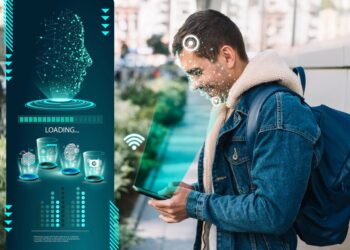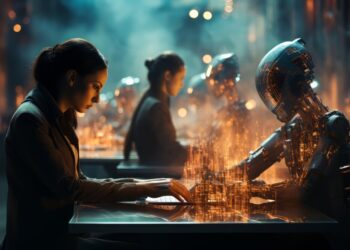Revolutionizing Warfare: The Role of Robotics in the Military and Defense Sector
Robotics has become an integral part of modern warfare and defense, providing new opportunities for efficiency, safety, and effectiveness. The use of robotics in the military and defense sector is transforming the way we approach national security, providing new avenues for intelligence gathering, target acquisition, logistics, and combat operations. In this article, we will explore the role of robotics in the military and defense sector and their impact on the future of warfare.
The Use of Robotics in Military and Defense
The use of robotics in the military and defense sector is not a new concept, with unmanned aerial vehicles (UAVs) and unmanned ground vehicles (UGVs) being used for surveillance and reconnaissance for several years. However, recent advancements in robotics technology have led to the development of new applications and opportunities in the military and defense sector.
Some of the key applications of robotics in the military and defense sector include:
Intelligence Gathering: Robotics can be used for intelligence gathering, providing real-time data and analysis of potential threats and targets.
Target Acquisition: Robotics can be used for target acquisition, providing accurate and precise targeting of potential threats.
Logistics: Robotics can be used for logistics, providing efficient and safe transportation of supplies, equipment, and personnel.
Combat Operations: Robotics can be used for combat operations, providing new avenues for situational awareness, mobility, and firepower.

Benefits of Robotics in Military and Defense
The integration of robotics in the military and defense sector provides several benefits for national security, military personnel, and society as a whole. Some of the key benefits include:
Increased Efficiency: Robotics can help to reduce the workload of military personnel, providing more efficient operations and reducing the risk of fatigue and injury.
Improved Safety: Robotics can help to reduce the risk to military personnel, providing new avenues for intelligence gathering, target acquisition, logistics, and combat operations.
Enhanced Effectiveness: Robotics can help to enhance the effectiveness of military operations, providing new capabilities and technologies for intelligence, logistics, and combat operations.
Reduced Cost: Robotics can help to reduce the cost of military operations, providing more affordable options for national security and defense.
Challenges and Concerns
The integration of robotics in the military and defense sector also raises several challenges and concerns, including:
Technical Challenges: The development of robotics for military and defense applications is a complex and challenging process, requiring significant investment in research and development.
Regulatory Challenges: The integration of robotics in the military and defense sector raises concerns about regulation and oversight, with many governments and organizations calling for increased transparency and accountability.
Ethical Concerns: The use of robotics in the military and defense sector raises several ethical concerns, such as the potential for autonomous weapons and accountability and liability for robotic systems.
Social and Economic Impacts: The integration of robotics in the military and defense sector has the potential to impact employment and the defense industry, raising concerns about social and economic impacts.
Conclusion
The integration of robotics in the military and defense sector is transforming the way we approach national security and defense, providing new opportunities for efficiency, safety, and effectiveness. Robotics has the potential to revolutionize the way we gather intelligence, acquire targets, provide logistics, and conduct combat operations.
As we move forward, it is essential to address the challenges and concerns raised by the integration of robotics in the military and defense sector. This can be achieved through increased investment in research and development, enhanced regulation and oversight, and ethical and social considerations.
The integration of robotics in the military and defense sector is transforming the future of warfare, providing new opportunities for efficiency, safety, and effectiveness. The future is bright, and we can expect to see more advancements and innovation in the years to come. As we move forward, it is essential to harness the power of robotics to revolutionize national security and defense while upholding social and ethical values.
Moreover, robotics has the potential to address some of the world’s most pressing security issues, such as terrorism, insurgency, and cyber warfare. For instance, robotics can be used for counter-terrorism operations, providing new avenues for intelligence gathering and combat operations. Moreover, robotics can be used for cyber warfare, providing new capabilities and technologies for detecting and responding to cyber threats.
In addition, robotics can help to reduce the risk of human casualties in military and defense operations, promoting safety and ethics in national security and defense. Robotics can provide new avenues for intelligence gathering, target acquisition, logistics, and combat operations, reducing the risk to military personnel and civilians.
The integration of robotics in society is still in its early stages, and we can expect to see more advancements and innovation in the future. However, it is crucial to ensure that we use these technologies responsibly and ethically to address concerns about safety, regulation, ethics, and social and economic impacts. By doing so, we can harness the power of robotics to transform national security and defense while upholding social and ethical values.

The integration of robotics in the military and defense sector is transforming the future of warfare, providing new opportunities for efficiency, safety, and effectiveness. Robotics has the potential to revolutionize the way we approach national security and defense, providing new avenues for intelligence gathering, target acquisition, logistics, and combat operations. As we move forward, it is essential to address the challenges and concerns raised by the integration of robotics in the military and defense sector while harnessing the power of these technologies to transform national security and defense while upholding social and ethical values.
Furthermore, the integration of robotics in the military and defense sector can promote international cooperation and collaboration. Robotics can provide new opportunities for joint military exercises, intelligence sharing, and technology transfer, promoting cooperation and collaboration between nations.
Moreover, the integration of robotics in the military and defense sector can also promote innovation and creativity. Robotics can provide new avenues for research and development, encouraging scientists and engineers to develop new technologies and capabilities for national security and defense.
However, the integration of robotics in the military and defense sector also raises concerns about the potential for cyber threats and hacking. The use of robotics in national security and defense operations can make these systems vulnerable to cyber attacks, potentially compromising national security and defense.
To address these concerns, it is essential to ensure that the development and integration of robotics in the military and defense sector is done responsibly and ethically. This can be achieved through the development of regulations and oversight to manage the impact of robotics on national security and defense. Moreover, it is crucial to promote education and training to ensure that individuals are equipped with the skills needed to adapt to the changing national security and defense landscape.





















